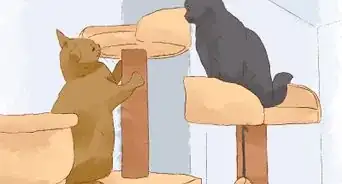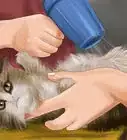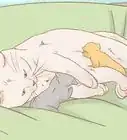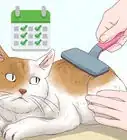wikiHow is a “wiki,” similar to Wikipedia, which means that many of our articles are co-written by multiple authors. To create this article, 28 people, some anonymous, worked to edit and improve it over time.
There are 11 references cited in this article, which can be found at the bottom of the page.
wikiHow marks an article as reader-approved once it receives enough positive feedback. In this case, 82% of readers who voted found the article helpful, earning it our reader-approved status.
This article has been viewed 241,215 times.
Learn more...
Breeding cats is a serious, time intensive, expensive undertaking. But can also be a very rewarding experience incorporating a lot of very cute kittens! These are the basic requirements for safely breeding healthy, happy cats.
Steps
Planning ahead
-
1Pick what breed of cat you want. There are almost always plenty of kittens in animal shelters, and breeding pure-bred or pedigreed cats is a good way to make sure your kittens have something to recommend them over the rescue cats. Picking the breed that you like most is certainly an option, but if you have any concern about finding homes for the kittens, consider selecting your parent cats from a popular breed that isn't already represented in your area.
-
2Network. Many breeders won't sell a cat with breeding potential to someone with no experience in the world of cat breeding and showing.[1] If you already have a cat, take it to some shows (most shows have sections for cats that aren't a specific breed), and make some contacts.Advertisement
-
3Pick a queen (female) carefully. In addition being in good health and of an age appropriate for breeding (at least 18-24 months[2] ), here are some things to take into account:
- Does she display the standard characteristics of her breed?
- Does she have the correct paperwork detailing her ancestry?
- Does she have breeding rights?
- Did her mother or grandmother have any pregnancy complications?
- Cats that have been shown and done well will produce more desirable kittens, so consider whether you can show her successfully (or whether she has already been shown).
- Is she friendly and sociable? (These are inherited traits![3] )
-
4Find a good stud. Most of the things you look for in a queen are very similar to those you want in a stud - character, looks, breed status, and health are equally important. Stud owners should have paperwork that demonstrates the current health and breed status of their cat. It isn’t wise to use a pet cat as a stud. Normal behavior for un-neutered male cats includes aggression and spraying,[4] and this behavior doesn’t necessarily cease if the tom is later neutered. [5] Ask around at vets, cat shows, and breeders to find an eligible stud whose not too closely related to your queen. It’s worth traveling to the right stud if you want it to be easy to find good homes for your kittens.
-
5Make a vet appointment for your queen just before you breed. You need to make sure that both cats are healthy before breeding them. Some things to have the vet check for are:
- Vaccinations should all be up to date
- FeLV and FIV - these tests should happen directly before each breeding
- Ringworm, ear mites and fleas
- A stool check should be performed for internal parasites
- Genetic diseases including polycystic kidney disease, hip dysplasia, patellar luxations, and heart disease.
- Any breed-specific diseases[6]
-
6Plan a budget. Raising kittens is expensive. The following are estimates of some costs that you should take into consideration:
- Veterinary care - like human mothers, feline mothers need extra veterinary check ups to ensure that the pregnancy is going well, and can have unexpected complications necessitating procedures such as a C-section.
- Pre-breeding check up - $700
- During pregnancy check up with ultra-sound - $160 (or with x-ray $110)
- Emergency C-section - at least $300[7]
- Food - good quality food for your queen is important thought her entire life, but especially during pregnancy. You also need to make sure her kittens have good quality food as they are weaned - this is essential to their development. You should budget for things like fresh chicken, fish, special kitten food, and raw good quality minced beef, all of which are good for weaned kittens.
- Food for the queen during pregnancy and lactation - $147
- Emergency food for the kittens if something goes wrong with their milk supply - $20
- Registration fees - $155 for your first year as a breeder. If you want your kittens to have the advantage of a pedigree, you need to register yourself as a breeder and register your queen, and each litter.
- Heating, in the winter. Kittens need to be kept warm all the time, and in the winter, this can add up to a sizable bill.
- Veterinary care - like human mothers, feline mothers need extra veterinary check ups to ensure that the pregnancy is going well, and can have unexpected complications necessitating procedures such as a C-section.
-
7Consider carefully. There are a lot of unwanted kittens in the world, so you should be sure you want to breed more cats before starting. If your main reason for wanting to breed cats is to have kittens to play with, consider volunteering for your local animal shelter - most shelters send rescue kittens home with trained volunteers until they are weaned and ready to be adopted. Some other things to take into considerations are:
- Money - can you afford all of the costs of kitten-raising if you don't manage to make a profit selling the kittens?
- Time - breeding cats and raising kittens are both time intensive activities - you should not leave an expectant mother or little kittens alone for extended periods of time (even a work-day is too long).
- Finding homes for the kittens - is there a market for bred cats in your area? Are you prepared to do the marketing required to find good homes for them? Any home is not a good home; you're responsible for making sure that the people who adopt your kittens aren't going to get tired of them, or get rid of them because the cat developed bad behavior due to poor treatment.
- Ethical issues - while there are some people who are looking for specific appearance of characteristics in cats that are only found in purebreds, consider whether your kittens might end up in homes that would have been equally happy with a rescue cat. Every year in the US 1.4 million adoptable cats are euthanized in shelters because no suitable home for them can be found.[8] , [9]
Breeding Your Cat
-
1Identify when your cat will be fertile. Cats will usually only be fertile during the spring and summer, though indoor cats who are exposed to a lot of artificial light may be fertile year round. Ovulation in cats is provoked by the act of mating, and if the cat doesn't ovulate, the cycle of fertile stages will probably repeat several times.[10] Some cats won't demonstrate signs of this cycle in the presence of their owner, so pay attention to the tomcats in the neighborhood too - they will turn up when a female is in heat.[11] The stages of the estrous cycle, excluding anestrus, which is when the cat isn't fertile in the winter are:
- Proestrus - this stage may last one to two days, but may be as short as an hour, and isn’t seen in all cats. During this period, she may call to the tom, roll and rub on the ground, but won’t allow the tom near her.
- Estrus - this stage usually lasts about a week, and is when the queen should be taken to the tom for mating. The primary sign of this period is her vocal call to the male with a specific type of yowl.[12] This sound is generally a short-ish, plaintive, hollow sounding yowl that sounds almost like “aah-roo-ugh?” (though it can vary between breeds, so be sure to check with a breeder who is familiar with your breed) and will be accompanied by the cat doing all she can to get to any toms in the area. [13]
- Interestrus - if the cat did not ovulate she will enter this period, which usually lasts about a week before estrous or estrus periods return. She will show no sign of reproductive activity during interestrus.
-
2Know what mating entails. The owner of the stud will usually take care of these arrangements, but knowing what to expect is a good idea. No reputable stud owner will hide any of his preparations from you, and you should check to make sure the owner knows what to do.
- The tom needs a place to escape to just after mating takes place as the female often reacts viciously.
- Be prepared to hear a bloodcurdling shriek from the female - this is normal.[14]
- Immediately after mating, the female will probably frantically groom herself for about an hour, during which time she won’t allow anyone near her. After this, the estrous period will continue as it was before mating occurred until its natural end.
- It is important to make sure a cat is bred more than once during an estrous period since she will not ovulate until after she has mated. Three breedings a day for the first three days of the estrous cycle should produce a 90% chance of the queen ovulating.[15]
-
3Plan for second mating, if necessary. If your cat does not become pregnant on her first visit to the stud, there are several possible timelines:
- She didn't ovulate. If this is the case, she will become fertile again in about a week.
- She ovulated, but didn't become pregnant - this period is called metestrus; it lasts 5-7 weeks, and during it she will not demonstrate any reproductive activity.[16]
- She became pregnant, but the pregnancy was unsuccessful. If this is the case, she will become fertile again 2-3 weeks after losing the kittens. [17]
-
4Make sure your cat doesn't mate with any other toms. When your female cat is in heat, she will call to any male within earshot, and desperately try to get outside to mate with any tom who responds to her call,[18] but it isn’t a good idea to let her choose her own mate because then you won’t know anything about the kittens father, and any potential illness or genetic problem he may pass down to them. Even after the queen has been bred by your chosen stud, as long as the estrus cycle lasts, she will try to continue mating, and any of these matings could produce any of the kittens she produces.
Taking Care of your Cat During Pregnancy and Lactation
-
1Identify if your cat is pregnant. There is no early diagnostic for feline pregnancies like there is for humans, so the earliest a pregnancy can be verified is at day 15 via an ultrasound. The following methods, when used by someone who is familiar with them, can be used to diagnose pregnancy in cats:
- Abdominal palpitations from day 20 - these should only be undertaken by someone with a lot of experience because you can easily cause a miscarriage if you are too forceful, and there are other parts of her abdomen that may feel lumpy. At this stage, the kittens feel like evenly spaced swellings about the size of un-shelled peanuts. Between day 35 and 49, it's not possible to feel the fetuses due to the sacs of fluid they are contained in.
- Ultra-sound - though the presence of kittens can be seen after 15 days, heartbeats appear at day 20.
- A test for the hormone relaxin can detect pregnancy in cats after about 25-30 days.[19]
- Morning sickness during the 3rd or 4th week of pregnancy - this doesn't occur for all cats, and includes apathy, vomiting and bring less interested in food, but only lasts for a day or two, and can easily be missed.
- X-ray - past day 43 an x-ray will show the bone-structure of the kittens, and is better than ultrasound at counting the number of kittens.
- External signs - by day 35 the nipples will begin to be pink and obvious, and the cat will noticeably increase in size. In the last two weeks, a pear-shaped abdomen will be noticeable. Shortly before giving birth, the cat will develop more noticeable breasts, and a milky fluid may be excreted from the nipples.[20]
-
2Know when to expect the kittens. The normal gestation period for cats is 63-69 days,[21] so if you bred your cat intentionally, it should be easy to calculate her due-date to within a few days. If not, here are some other options for guessing when she will give birth.
- A check-up with your veterinarian can provide a very accurate due-date. Your vet will probably use one of the diagnostic methods in determining whether a cat is pregnant to guess how far into her pregnancy she is.
- Signs that queening is imminent include vomiting, crying, seeking out a place to have her kittens, and grooming.[22]
- Remember when you last heard her giving the mating call discussed above (this sound is generally a short-ish, plaintive, hollow sounding yowl that sounds almost like “aah-roo-ugh?”) - this was a sign of the last time she was fertile, and the pregnancy probably began during that week.
- Watch the tomcats in the neighborhood - the week they stopped being regularly found around your house is probably when she became pregnant
-
3Check in with your veterinarian. You should make an appointment with your vet 2-3 weeks after mating, or as soon as you suspect she is pregnant if it may be more than a month into her pregnancy. At this point, you should get some recommendations for keeping your cat healthy during her pregnancy.
- If the pregnancy appears to be normal, then one more visit about a week before the kittens are expected is all that's necessary. The vet will check to make sure that the kittens are healthy, and go over what you should do when they are born. [23]
-
4Help your cat give birth. Cats generally prefer to be left mostly alone when giving birth, but your pet will probably be reassured to know that you are in the vicinity. Some things she will be looking for in a nesting spot are:
- Easy access to food, water, and a litter box (but don't put the litter box too close as you don't want to invite an infection!)
- It should be in a quiet, dark corner of the house with little traffic.
- A box lined with cozy blankets is generally a good idea.
- It should be somewhere that the kittens won't accidentally stumble out of - newborn kittens are blind and deaf, and the mother will want to keep them enclosed in a small space until they are old enough to jump out of it.
- Remember, if she chooses a spot other than the one you have prepared for her, accept it - moving her will stress her out and may cause her to delay the birth.
-
5Know the signs of complications. If any of the following occur, take your cat to the veterinarian immediately.
- Any yellow-green or bright green discharge
- Any bloody discharge
- Each kitten born should be followed by a placenta, if the placenta does not emerge, take the cat to a vet to have it removed - do NOT attempt this yourself, it can kill the cat if done incorrectly. If you come upon your cat after she has already had one or two kittens, don't be alarmed if a placenta or two is missing, mother cats eat the placenta to regain the nutrients they contain.
- No kittens have been produced 3-4 hours into labor
- The queen is distressed, crying, or licking her vulva without producing any kittens.
-
6Check on the kittens as they are born. As each kitten is born, the mother should lick it to remove the embryonic sac. This will stimulate the kitten to breathe and move. If the mother doesn't do this, you will need to use sterile hands and a clean towel to remove the embryonic sac and wipe the kittens face clean. If the mother continues to show no interest in the kitten and it begins to shiver, dry it with a clean towel vigorously enough to make it meow (this is still very gently!), this should get the mothers attention.
-
7Be prepared to take care of the kittens. Newborn kittens need to eat every few hours. If the litter is especially large, often the smaller, weaker kittens (runts) will be excluded from nursing. Sometimes, there can be a problem with the milk supply as well. Notice if the kittens don't seem to be getting any milk. Consult a vet if the mother doesn't appear to be lactating, they can sometimes stimulate the milk supply, but make sure the kittens get milk as often as they need it. There are two options for replacing a mothers milk supply:
- Acquire a surrogate mother - this means a cat who has kittens of the same age but has a very small litter. Cats are generally happy to accept surrogate kittens, provided they have a small enough litter of their own, and the surrogates are of a similar age to their own litter.
- Hand feed the runts. To do this you will need milk formula specifically for kittens and a bottle with a teat designed for kittens. If you're having difficulty finding these, contact your vet for assistance. Make sure to follow the instructions on the milk substitute to make it the correct temperature and consistency. Do NOT feed kittens cow milk, this will upset their stomach.[24]
-
8Socialize the kittens. The kittens should stay with their mother until they are weaned, but this doesn't mean you can't play with them! Your pet should trust you enough to let you near her kittens, but make sure not to do anything that distresses the mother. Be careful not to let them crawl off furniture like beds or desks as young kittens have no depth perception.
Community Q&A
-
QuestionCan we keep the male with the kitttens after mating?
 Community AnswerAlways separate a female cat and her kittens from the male whenever possible to prevent undesirable outcomes.
Community AnswerAlways separate a female cat and her kittens from the male whenever possible to prevent undesirable outcomes. -
QuestionMy queen keeps hissing and growling at a male we've brought into our home to mate with her. Is this normal?
 Merlin77Top AnswererShe won't be receptive until a certain point in her heat cycle, so be patient. She will know what to do in time.
Merlin77Top AnswererShe won't be receptive until a certain point in her heat cycle, so be patient. She will know what to do in time. -
QuestionBoth my cats are neutered and I want them to have kittens. Neutered cats can't have kitttens, though, can they?
 Community AnswerNo. A neutered cat is a male that has had his testes removed. As such, he cannot produce sperm and therefore, kittens.
Community AnswerNo. A neutered cat is a male that has had his testes removed. As such, he cannot produce sperm and therefore, kittens.
References
- ↑ http://www.mcbfa.org/breedcats.html
- ↑ http://www.peteducation.com/article.cfm?c=1+2139&aid=891
- ↑ http://www.peteducation.com/article.cfm?c=1+2139&aid=891
- ↑ http://www.peteducation.com/article.cfm?c=1+2139&aid=891
- ↑ http://www.knowyourcat.info/info/reproduction.htm
- ↑ http://www.peteducation.com/article.cfm?c=1+2139&aid=891
- ↑ http://www.mcbfa.org/breedcats.html
- ↑ https://www.aspca.org/about-us/faq/pet-statistics
- ↑ http://www.humanesociety.org/issues/pet_overpopulation/facts/pet_ownership_statistics.html
- ↑ http://www.peteducation.com/article.cfm?c=1+2139&aid=891
- ↑ http://www.pet-informed-veterinary-advice-online.com/feline-pregnancy-signs.html
- ↑ http://www.knowyourcat.info/info/reproduction.htm
- ↑ http://moderncat.com/articles/12-sounds-cats-make-and-what-they-mean/68602
- ↑ http://moderncat.com/articles/12-sounds-cats-make-and-what-they-mean/68602
- ↑ http://www.peteducation.com/article.cfm?c=1+2139&aid=891
- ↑ http://www.peteducation.com/article.cfm?c=1+2139&aid=891
- ↑ http://www.peteducation.com/article.cfm?c=1+2139&aid=891
- ↑ http://moderncat.com/articles/12-sounds-cats-make-and-what-they-mean/68602
- ↑ http://www.pet-informed-veterinary-advice-online.com/cat-pregnancy.html#preg-relaxin
- ↑ http://pets.webmd.com/cats/cat-pregnancy-gestation?page=2
- ↑ http://pets.webmd.com/cats/cat-pregnancy-gestation
- ↑ http://www.vetinfo.com/problems-cat-pregnancy.html
- ↑ http://pets.webmd.com/cats/cat-pregnancy-gestation?page=2
- ↑ http://www.pet-informed-veterinary-advice-online.com/cat-pregnancy.html#preg-relaxin
About This Article
To breed cats, start by selecting a healthy queen from the breed of cat you want. While making this decision, you should consider things like the popularity of the breed and whether you'l be able to find homes for the kittens. Then, take your queen to the vet to check all vaccinations are up to date and she is healthy. Additionally, you'll want to ask the owner of the male cat, known as the stud, for all relevant paperwork to confirm its health. Once you're satisfied, introduce your cat to the stud when it's fertile, which is usually during the spring or summer. For tips on how to budget for breeding cats and how to tell if your cat is pregnant, read on!
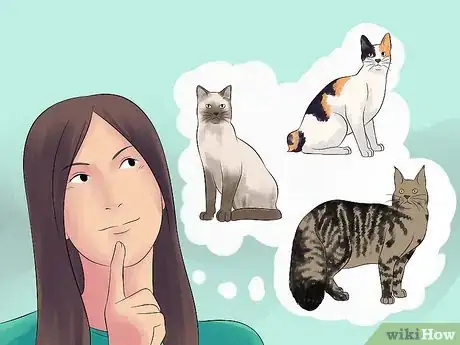

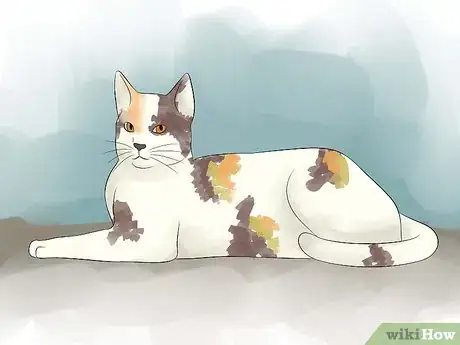
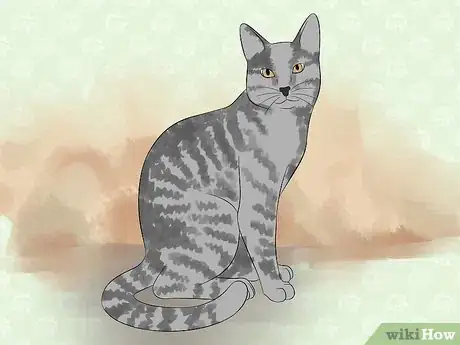


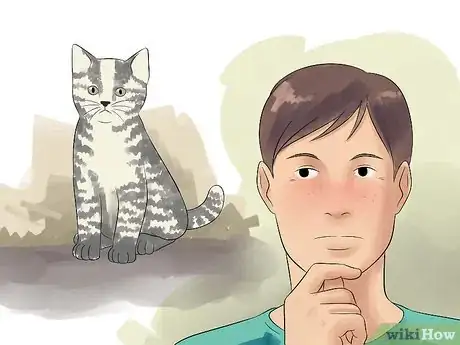
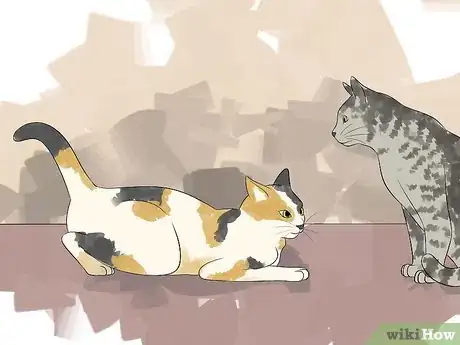
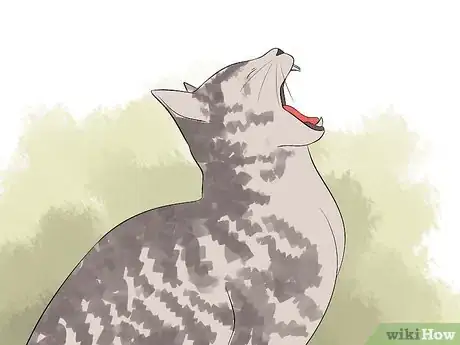
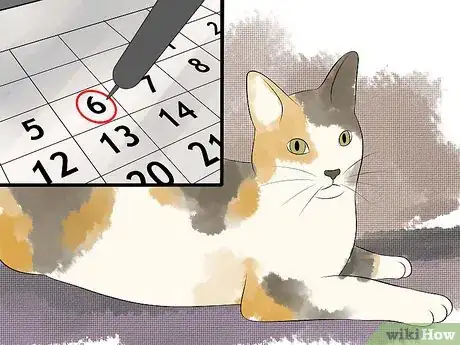
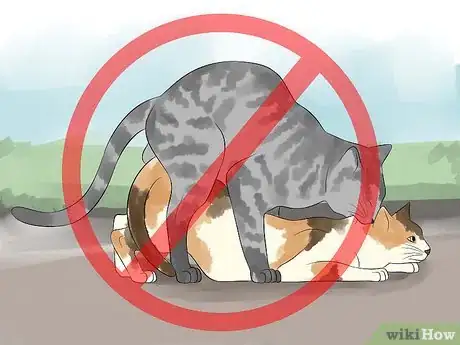
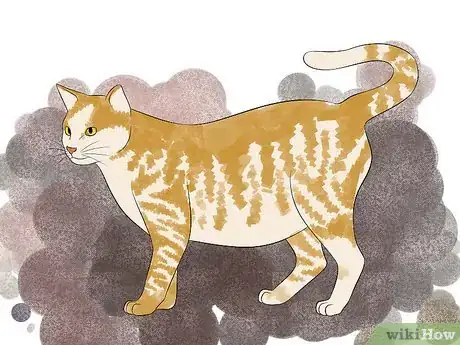
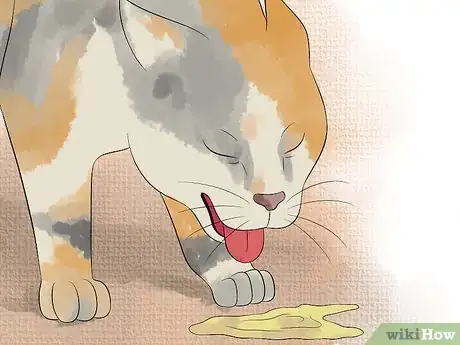
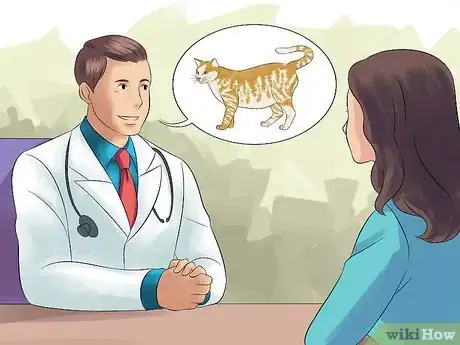

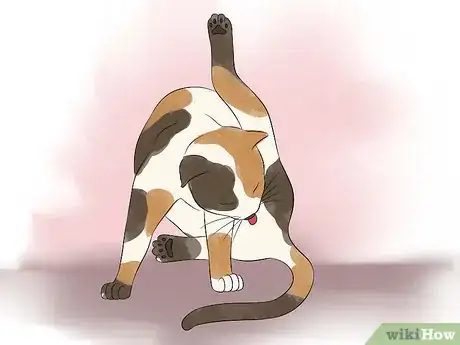
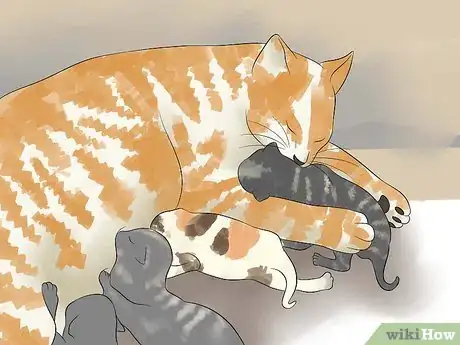
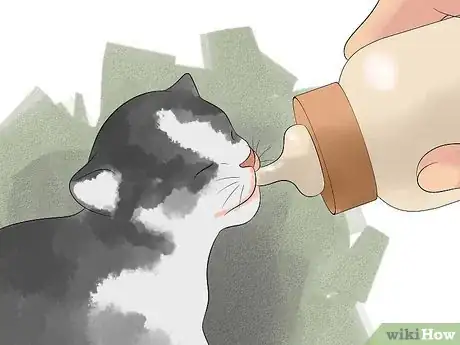
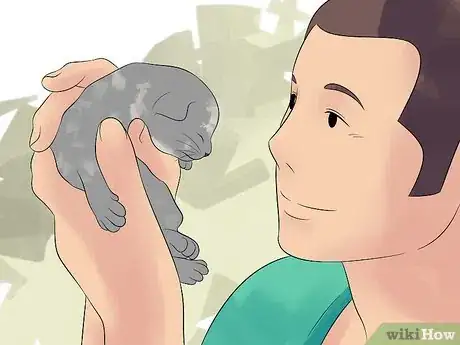

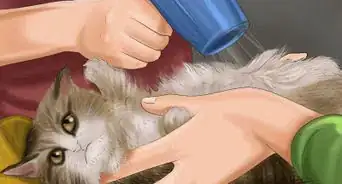
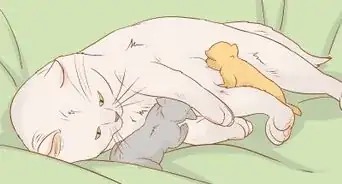

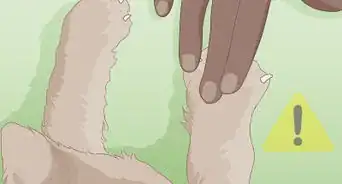
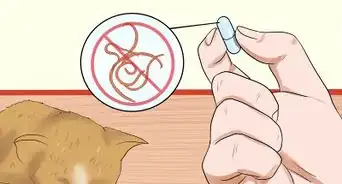
-Step-11-Version-6.webp)


